Enjoying the outdoors with proudly Philippine-made furniture
Never has outdoor living been given as much thought as it has for the past year.
In our homes, any space that can connect us with nature, whether it’s a balcony, a veranda or a garden, is a welcome respite from the confines of lockdown life. It’s also a safer place to entertain when we have guests from outside our bubble.
In fact, just as the living room has turned into gym, office and school, the same can happen with outdoor spaces as cabin fever sets in.
Even before the pandemic, it was already the perfect dining room and lounge, lit by a canopy of stars, with the ideal setup of an outdoor kitchen and herb garden nearby. With travel restricted, it has also turned into a destination-inspired oasis.
As we spend more and more time outdoors, it becomes imperative that we choose the right furniture to make it a pleasurable experience.
Organic comfort
Natural materials are a source of comfort, not just for their organic qualities but also because of the nostalgia for childhood days when we would spend summer afternoons seated on the lanai’s rattan armchairs cooling down with generous servings of halo-halo topped with ube ice cream and pinipig.
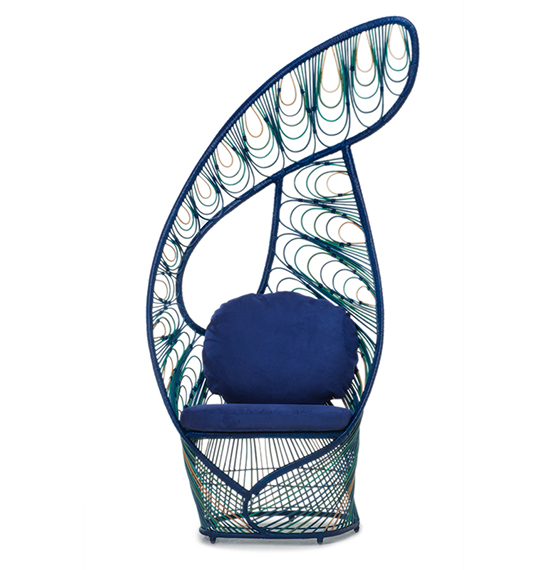
The high-backed peacock chair was prized because it was grand and gave the sitter dreams of ruling a kingdom or even a universe if one were so inclined to join the famous beauty contest.
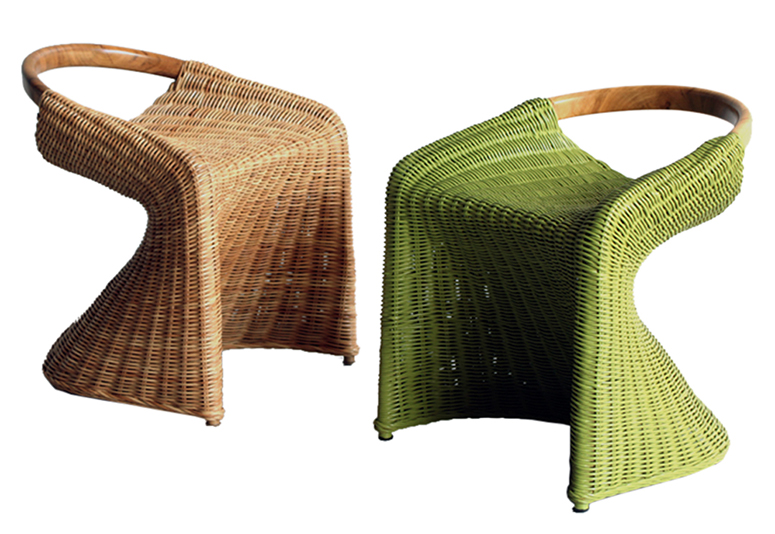
A modern version that stands out is the one by multi-awarded designer Kenneth Cobonpue. Kenneth, who brought international renown to Cebu for his functional art pieces using traditional craft updated with innovative design and technologies, has a whole line of indoor and outdoor furniture that has made it to the world’s most elegant showrooms and celebrity homes.
He deconstructed the peacock into an easy chair with the backrest gracefully emanating from the base in two diverging parts that meet asymmetrically at the top.

For those willing to share their crown and their “throne,” Vito Selma designed a loveseat version. Vito has also brought honor to his native Cebu with awards and features of his world-class furniture in international publications like Elle Décor and Architectural Digest.
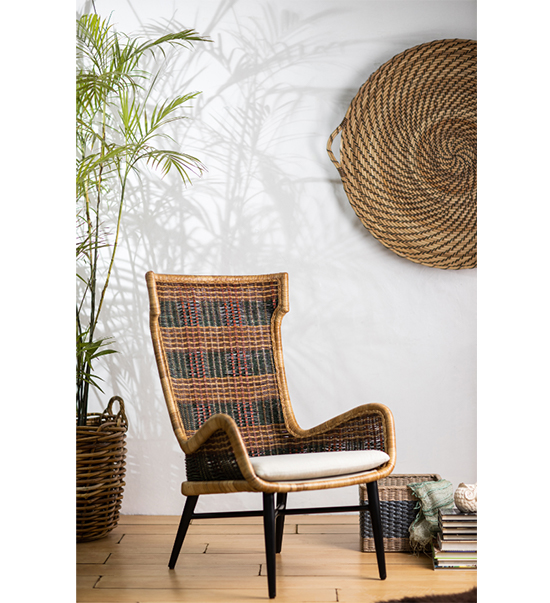
Enveloping forms
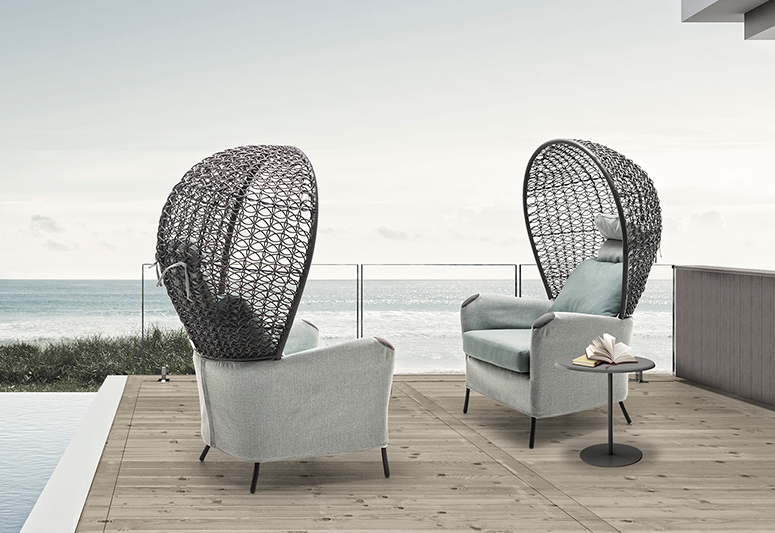
Evoking a cocoon, enveloping forms provide a cozy feeling as well as a sense of security. The Divalla Daybed of Outdoor+Solutions comes with a matching ottoman that can be used as a side table for books and drinks while lounging or as an auxiliary seat when someone wants to join the conversation.
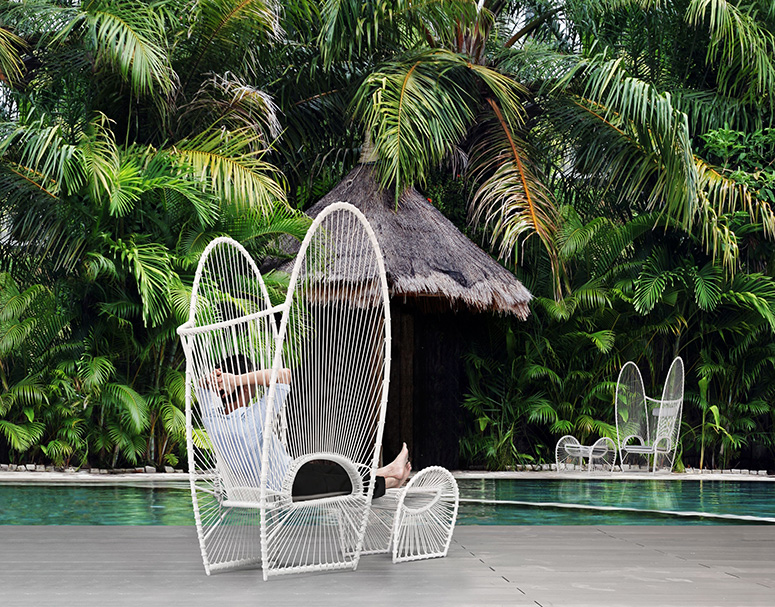
For safe travels, Cobonpue’s Russel Loveseat, reminiscent of a hot air balloon, can fly you first class to wherever your daydreaming takes you. His Apollo Daybed, “a blast from the past of building makeshift forts as a kid,” can take you even farther, to outer space. When you need to be alone, his Dolly or Papillon easy armchair will help you retreat into your own world.
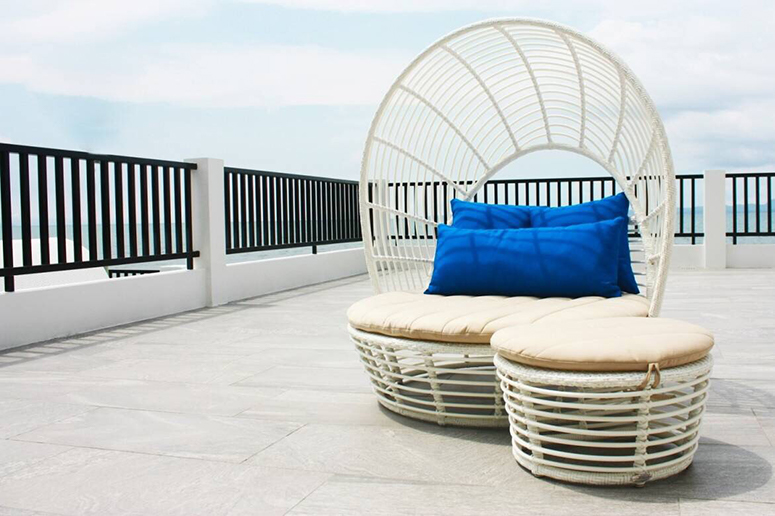
Vibrant colors
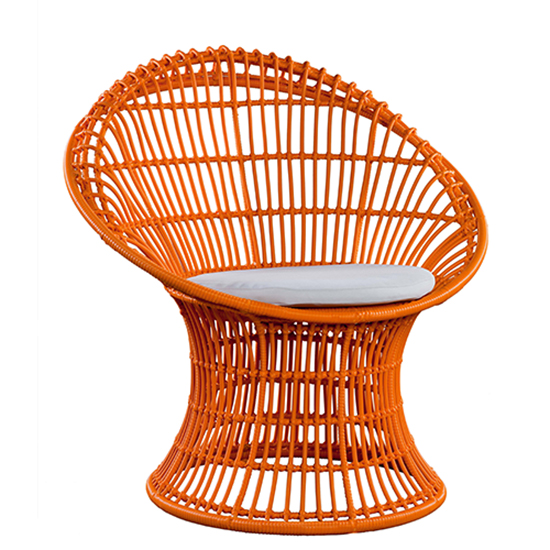
Happy colors will always brighten up the prevailing mood. Pampanga-based A. Garcia Crafts, which has been manufacturing and exporting residential and contract furniture since the mid-’90s, has powder-coated steel furniture like the Pamela Wire Chair, which looks light and spare in design but comes in a variety of bright colors.
For something more enveloping, the Lenard Lounge Chair can also be a happy addition to your outdoor set. Outdoor+Solutions’s Rasty Stool makes a striking accent piece with its sculptural shape and refreshing hues.
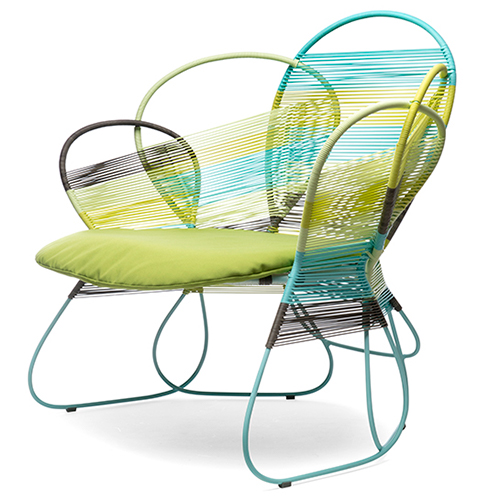
The Trame easy chair designed by Federica Capitani for Kenneth Conbonpue brings Italy’s La Dolce Vita to outdoor living with interlocking loops that create interesting shapes in joyous colors.
Statement pieces
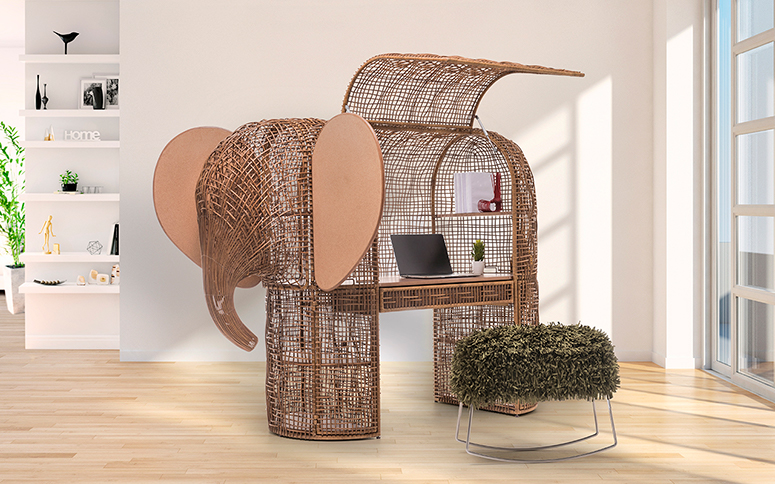
During these trying times, pieces that make us smile are always welcome. Coast Pacific, handcrafting their furniture in Cebu for the local and international market since 1993, has an interesting chaise lounge called the Polonia, a virtual art piece with its sculptural leaf shape.
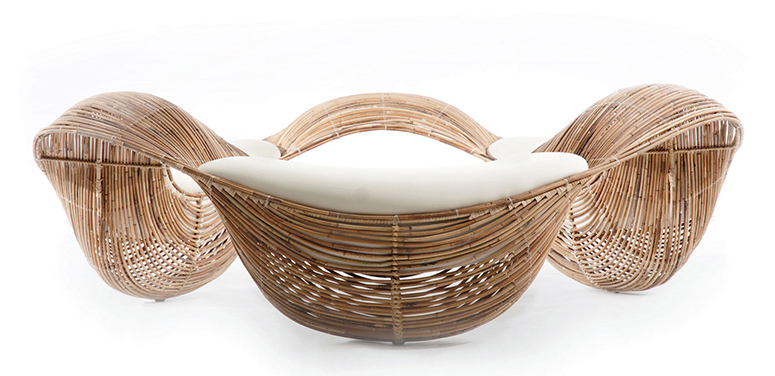
Vito Selma’s Baud bench, ideal for a relaxing get-together for three, has an arresting, undulating shape that recalls the waves of the sea.
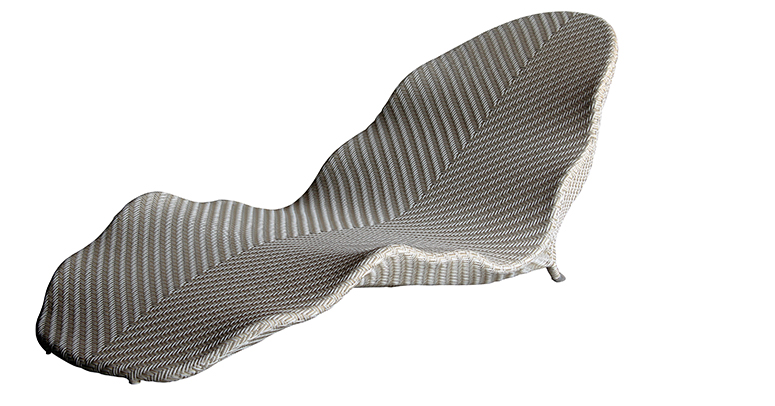
Cobonpue’s Babar cabinet, named after the elephant in the French children’s book, is part cabinet, part study. Just like the fictional elephant character, this piece is endearing: A delight to see and a pleasure to use.


